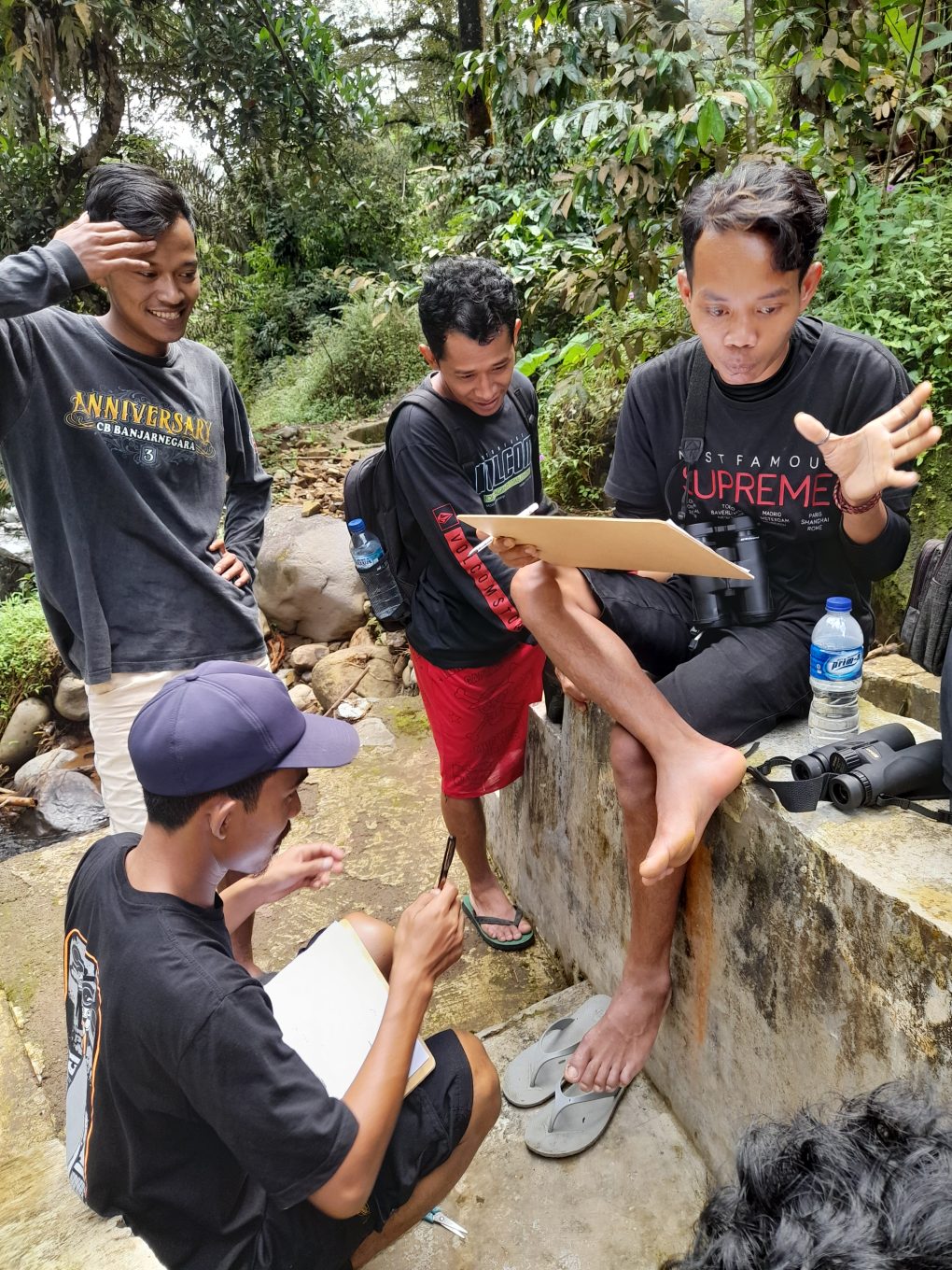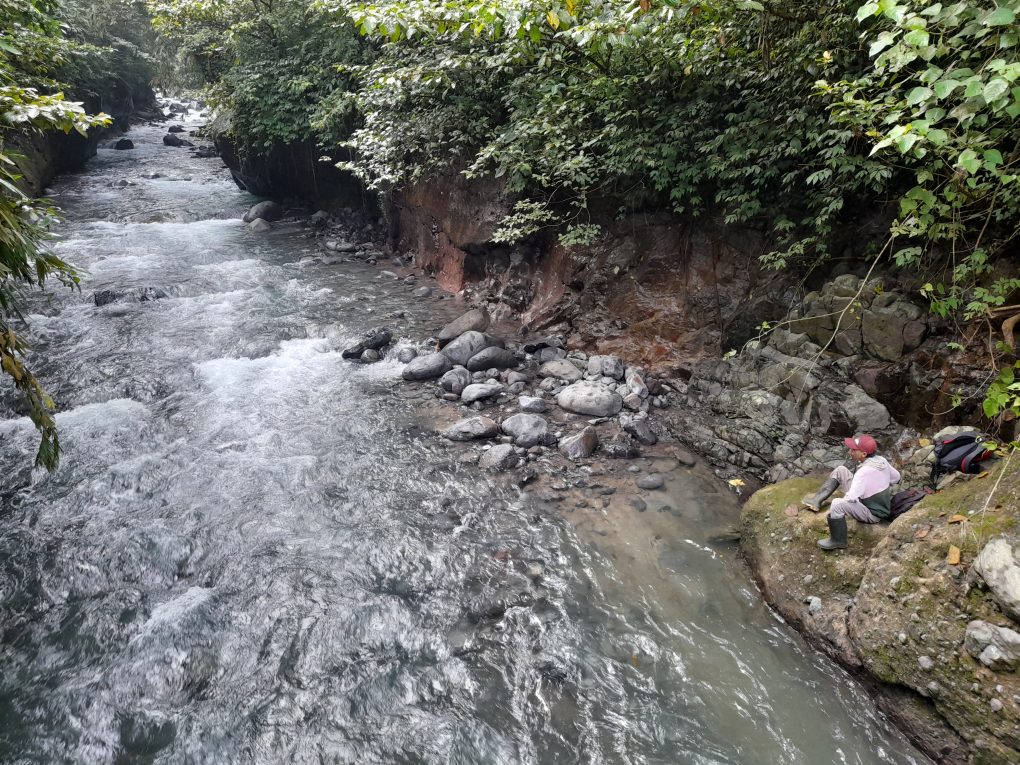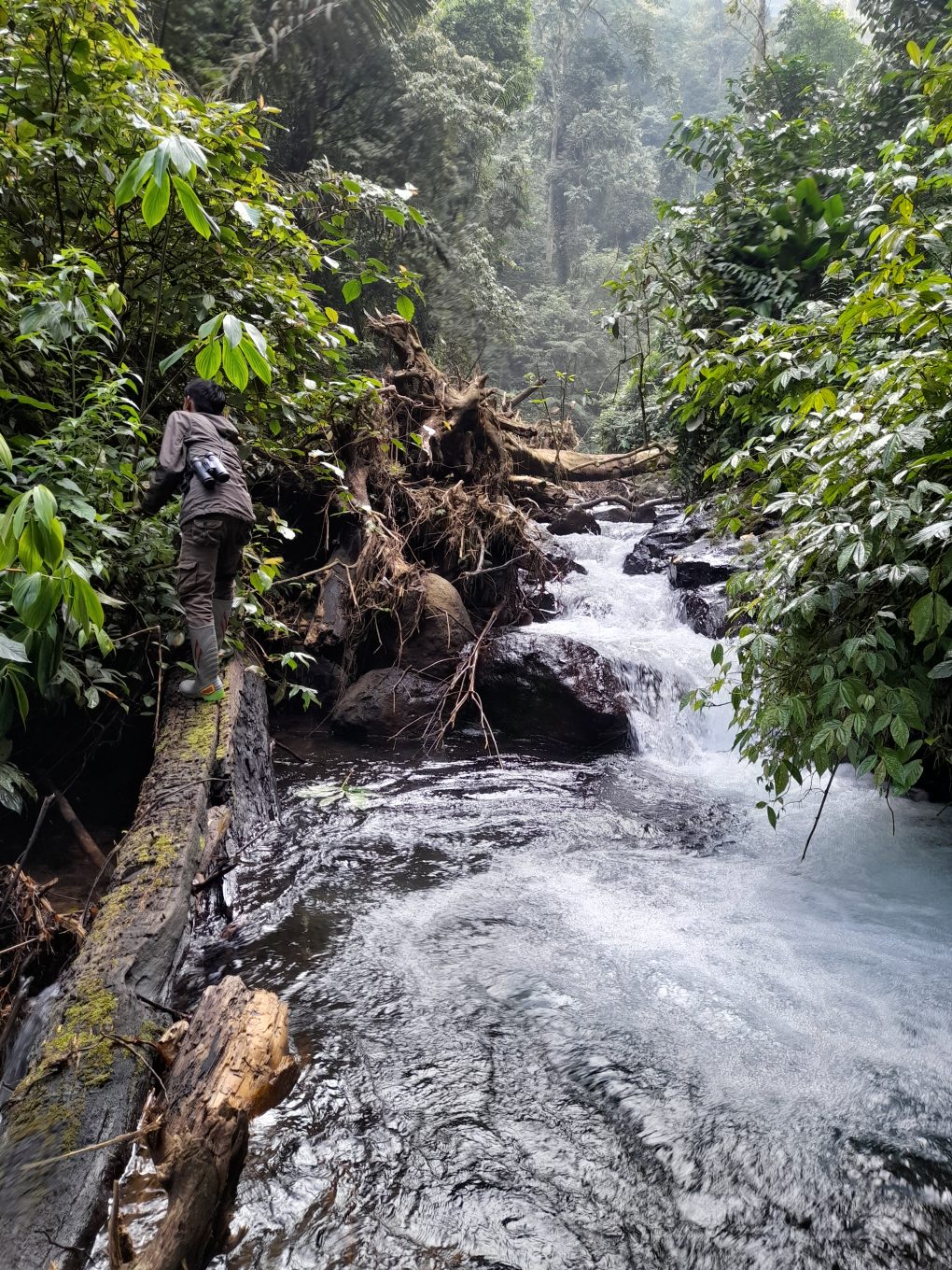More than 50 people are involved in our ongoing survey of the Javan Blue-banded Kingfisher (Alcedo euryzona). Divided into several teams, they have to date looked for the critically endangered bird along five rivers in the Pekalongan area, making numerous observations about the habitat in the process and recording other bird species present. This SwaraOwa project, supported by the Asian Species Action Partnership (ASAP) and the Oriental Bird Club (OBC), shows us what the citizen science movement can achieve.
Before we started on the survey, we held workshops on bird identification and survey techniques for residents from seven villages around the Petungkriyono, Doro and Lebakbarang forests. The event started in Mendolo Village on 11-12 March, and was subsequently repeated in Pungangan Village (25 April), Kayupuring Village (27 April) and Sidoharjo Village (26 May).
During the workshops, we taught villagers how to identify the Javan Blue-banded Kingfisher and distinguish it from other species of kingfisher. In terms of survey techniques, we introduced participants to Google Earth to help them find their way to the observation points. Along each of the rivers we covered, participants surveyed consecutive 1 km-long segments that contained five monitoring points 200 m apart from each other. Stationed at each of these points were two team members, who conducted observations simultaneously for one hour.
In addition to confirming the presence of the Javan Blue-banded Kingfisher, observers were asked to record the condition of the local habitat, other bird species observed and any human activity encountered. All this information was entered onto a data sheet.
As of early June, we have covered 29 of a total of about 37 km of river sections. This figure consists of 10 km on the Welo River, 6 km on the Pakuluran River, 5 km on the Blimbing River (including the Siranda River), 2 km on the Sengkarang River (including the Kumenep River), and 6 km on the Wisnu River.
The survey has produced very satisfactory results so far. We found Javan Blue-banded Kingfisher along two rivers, namely Welo and Wisnu. The kingfishers were found at an elevation of 308-715 m on the Welo River, and at 638-776 m on the Wisnu River. These sightings have extended the known distribution of the species.
The encounter on the westernmost Wisnu River was quite impressive. The Wisnu team, Mendolo villagers who are part of the Mendolo Young Farmers Association, had previously covered 4 km along the river on three visits, which did not turn up a single Javan Blue-banded Kingfisher. It was only on 24 April that the team encountered two individuals, one male and one female.
Deserving of special mention is Siswanto Abimanyu, a resident of Mendolo Kulon Hamlet, whose quick reflexes got us an excellent photograph of the female bird. Sis, as he is known, was at a monitoring point with his colleague M. Risqi Ridholah. It was more than half an hour into their wait when suddenly the female flew in from downstream and landed only about 3 m away from them. A few seconds later she was off again, flying further upstream, but luckily that was enough for Siswanto to snap a picture of her.
Getting photographic evidence to prove the kingfishers were there was one major achievement of the survey. Not only that, the discussion sessions after each round of observation have revealed a total of more than 90 bird species in the area. These include several important and endangered species, such as the Javan hawk-eagle (Nisaetus bartelsi), the Wreathed hornbill (Rhyticeros undulatus) and the Sangkar white-eye (Zosterops melanurus). Some of this data was logged into the Burungnesia app as a contribution by the Pekalongan community to science and bird conservation.
Written by : Imam Taufiqurrahman, translated by T T. Chan





